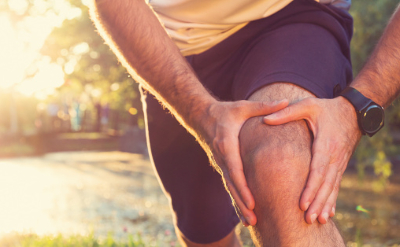People living with HIV have a higher prevalence and incidence of bone fractures than the general population, a systematic review and meta-analysis suggests.
Researchers examined data from 21 studies published between 2008 and 2017 that assessed fractures in people living with HIV.

The pooled estimated prevalence of fracture among people with HIV was 6.6%, with a pooled odds ratio (OR) of 1.9 compared with people in the general population who weren't living with HIV.
Among people living with HIV, the pooled estimates of fracture incidence were 11.3 per 1,000 person-years with an incidence rate ratio (IRR) of 1.5 compared to the general population.
Fractures were more common among people with HIV who were older (HR 1.4), smokers (HR 1.3), co-infected with HCV (HR 1.6), and diagnosed with osteoporosis (HR 3.3).
"Those living with HIV need to be more aware of their bone health as they had a higher risk of fracture compared to the general population," senior author Nai-Ying Ko of National Cheng Kung University in Taiwan said by email.
People living with HIV also had a higher fracture risk if they were male, abused injected drugs, or were taking antiretrovirals to treat HIV, Ko and colleagues report in PLoS One.
One limitation of the current analysis is that it excluded non-English reports and only looked at data from studies originating in developed countries, the study team notes. Another drawback is that despite subgroup and meta-regression analysis, there was considerable heterogeneity.
Furthermore, the analysis included few women, and even fewer postmenopausal women, and may underestimate how these factors contribute to fracture risk among people living with HIV.
Even so, the results offer fresh evidence that it's important for clinicians to encourage lifestyle changes to address modifiable risk factors for fracture in people living with HIV, said Dr. Melissa Orlandin Premaor, an adjunct professor in the department of clinical medicine at the Federal University of Minas Gerais in Brazil.
"These results matter for patients because if they know that they have increased risk of fractures they can change their lifestyle to prevent it," Dr. Premaor, who wasn't involved in the study, said by email.
Among other things, they can stop smoking and increase physical activity, Dr. Premaor advised.
"Walking is proved to decrease the risk of osteoporosis in the general population and it should be good for people living with HIV as well," Dr. Premaor said. "Other exercise that improves balance and endurance should also be good for people living with HIV."
In addition, there are comprehensive guidelines on the diagnosis, prevention and treatment of bone disease associated with HIV from the European AIDS Clinical Society (EACS) and from the U.S. that should be followed by clinicians, advised Dr. Juliet Compston, a professor emeritus of bone medicine at the Cambridge Biomedical Campus in the UK who wasn't involved in the study.
"In some cases, referral to a specialist in metabolic bone disease may be appropriate," Dr. Compston, who wasn't involved in the study, said by email.
SOURCE: https://bit.ly/2YTysRk PLoS One, online June 4, 2020.
